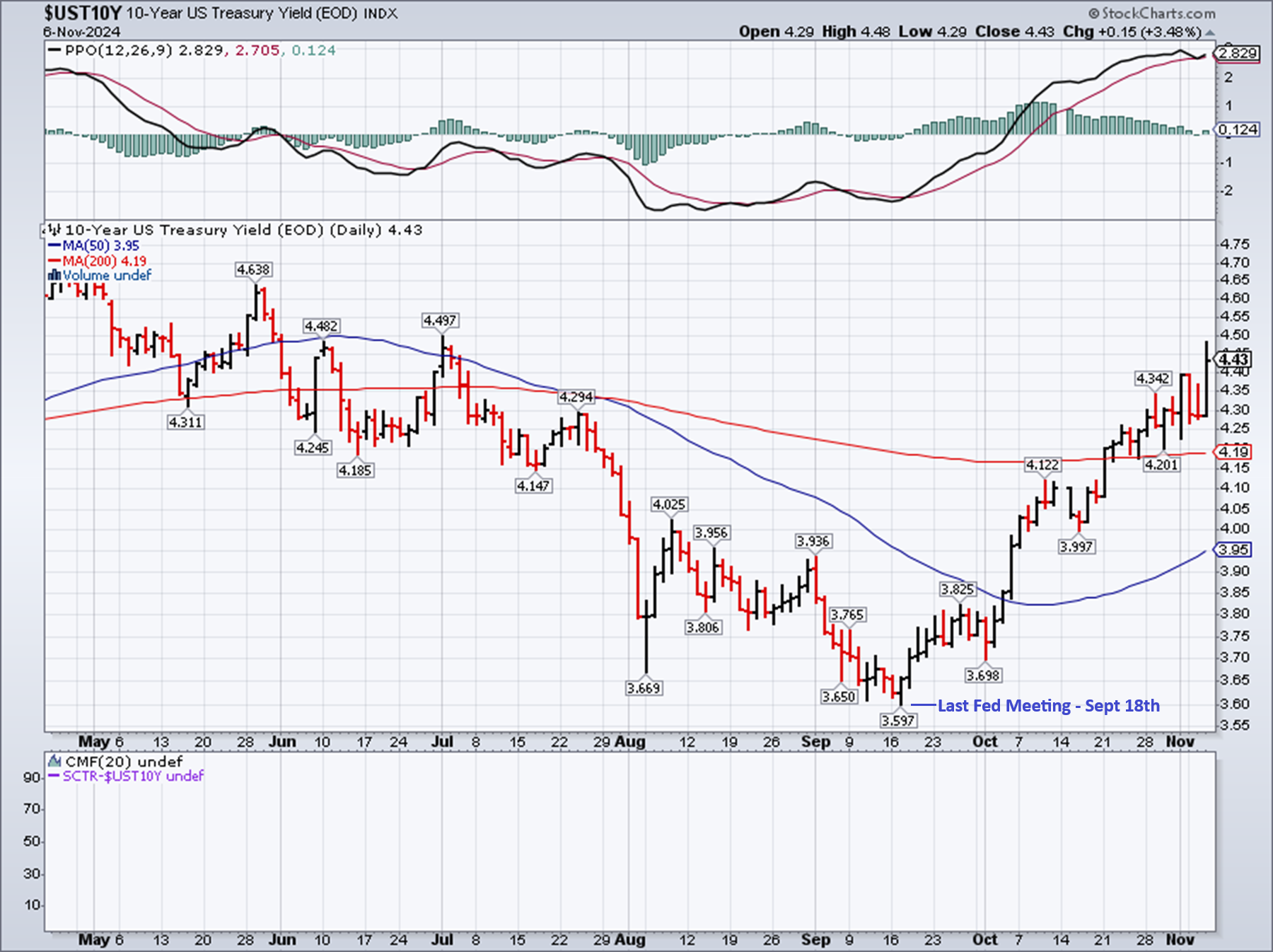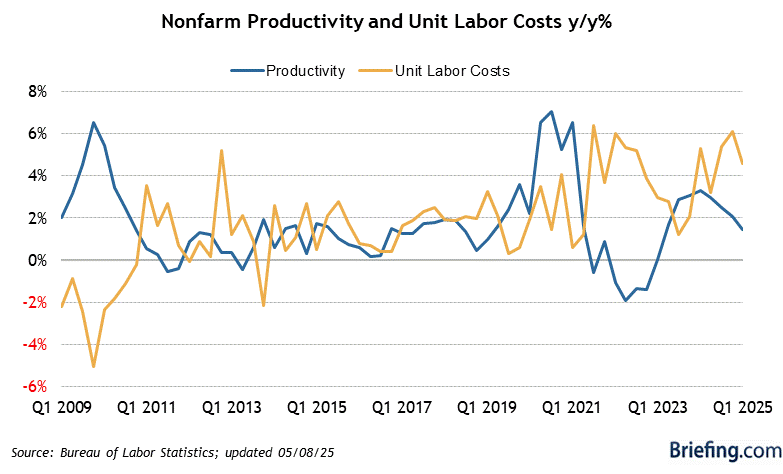During yesterday’s Webinar, we had Warren analyze the Fed’s upcoming decision (2pm, EST):


So that’s the outlook for this afternoon’s Fed Meeting. The problem the Fed is having is that the bond buyers aren’t buying the Fed’s plot-projected 3.5% rate (2025) and lowering the current Fed Funds Rate to 4.58% when the bond buyers are offering a long-term 4.4% is only going to make the Fed look MORE ineffective and THAT is a risk the Fed may not be willing to take…

Investing is about making choices – where are you likely to get the best returns, what asset classes are safe and which ones are risky. We have to be keenly aware in the risks around political transitions – like the one we are now going through in the US – the anticipation of policy changes 2 months before Donald Trump is sworn in as President (again) will have a powerful effect on all asset classes.
The Bank of England cut their rates by 0.25% this morning but they cut it to 4.75% – which will be higher than the Fed is offering if they lower their rates this afternoon. Clearly the BOE expects the Fed to cut rates or it is they who will look ineffective as it will be very hard to sell British Bonds at 4.75% when US Bonds are 4.83%.
Speaking of having no control of the Economy: Productivity just came in at 2.2%, which is down from 2.5% in Q2 but that’s OK because Q2 has been REVISED to 2.1% so 2.2% is now UP 0.1% from last quarter – isn’t that clever? Yes, it is all complete and utter BS – get over it!
Much more importantly, our Leading Economorons expected Unit Labor Costs to come in at 0.5%, up slightly from 0.4% in Q2 but SURPRISE! Unit Labor Costs are up 1.9% but that is DOWN from Q2s REVISED 2.4%. Yes, that’s right, Q2’s Labor Costs were actually 2.4% and NOT the 0.4% we were originally told and that is, in layman’s terms A HUGE F’ING DIFFERENCE (500%) IN A CRITICAL PIECE OF DATA!!!

Unit Labor Costs (500% more than we thought) are a key leading indicator of inflation. Remember when we said the 0.4% number made no sense? Well, we were right! As I noted at the time, you don’t get massive labor strikes when labor conditions are tight and you don’t see massive wage settlements from huge companies like Boeing affecting hundreds of thousands of workers and magically have 0.4% ULC increases. Now we know…
I’m a huge skeptic and even I couldn’t imagine the data was THAT far off! This means other inflation readings will have to be revised up as well and Bond buyers (remember them from before) are NOT going to be willing to lend us money at low rates when we’ve CLEARLY been misrepresenting our Inflation Data. Shame, shame, shame…
Cooling Labor Costs were the Fed’s ENTIRE premise for lowering rates at the last meeting. Overall Unit Labor Costs are up 3.4% from last year and THAT is only because we’ve had great productivity improvements (thanks AI!) but is that sustainable? The wages will keep going up but will the productivity keep pace or will Corporate Margins be squeezed?

The takeaway is that the labor market remains much hotter than previously reported, with wage pressures significantly higher than understood just a quarter ago. This dramatically changes the inflation picture and likely pushes any potential Fed pivot further into the future.
1976!
Sign Up for Updates
Get the latest stock market news from Phil by signing up for our newsletter!
By submitting this form, you are consenting to receive marketing emails from: . You can revoke your consent to receive emails at any time by using the SafeUnsubscribe® link, found at the bottom of every email. Emails are serviced by Constant Contact


 Investors may be pricing in a risk premium due to concerns about future fiscal stability, inflationary pressures, and global uncertainties. The weak auction demand suggests that investors want higher compensation for taking on duration risk, meaning they see more persistent inflation or even potential structural budget concerns over the long term.
Investors may be pricing in a risk premium due to concerns about future fiscal stability, inflationary pressures, and global uncertainties. The weak auction demand suggests that investors want higher compensation for taking on duration risk, meaning they see more persistent inflation or even potential structural budget concerns over the long term. 3. Implications for Inflation and Economic Activity:
3. Implications for Inflation and Economic Activity: 4. Potential Actions and Communication:
4. Potential Actions and Communication:




